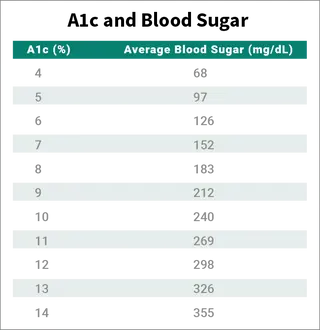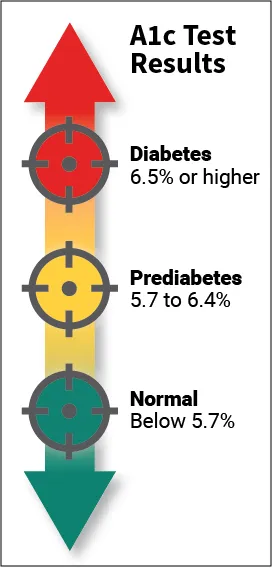What Is an A1c Test?
The hemoglobin A1c test tells you your average level of blood sugar over the past 2 to 3 months. It's also called HbA1c, glycated hemoglobin test, and glycohemoglobin. It’s a lot like a baseball player's season batting average. A single game doesn't tell you how a player is performing in their career. And 1 day's test results don't give you the complete picture of how your treatment is working.
People who have diabetes need this test regularly to see if their levels are staying within range. It can tell if you need to adjust your diabetes medicines. The A1c test is also used to diagnose diabetes.
What Is Hemoglobin?
Hemoglobin is a protein found in red blood cells. It gives blood its red color, and its job is to carry oxygen throughout your body.
How the Test Works
The sugar in your blood is called glucose. When glucose builds up in your blood, it binds to the hemoglobin in your red blood cells. The A1c test measures how much glucose is bound.
Red blood cells live for about 3 months, so the test shows the average level of glucose in your blood for the past 3 months.
If your glucose levels have been high over recent weeks, your hemoglobin A1c test will be higher.

What's a Normal Hemoglobin A1c Test?
For people without diabetes, the normal range for the hemoglobin A1c level is between 4% and 5.6%. Hemoglobin A1c levels between 5.7% and 6.4% mean you have prediabetes and a higher chance of getting diabetes. Levels of 6.5% or higher mean you have diabetes.
|
$('.ua_type_mobile .article table').css('width','100%');
Setting Goals for A1c Levels
The target A1c level for people with diabetes is usually less than 7%. The higher the hemoglobin A1c, the higher your risk of having complications related to diabetes. Someone who has had untreated diabetes for a long time might have a level above 8%.
If you have diabetes and your level is above your target, your doctor may change your treatment plan to get your level down.
A combination of diet, exercise, and medication can bring your levels down.
People with diabetes should have an A1c test every 3 months to make sure their blood sugar is in their target range. If your diabetes is under good control, you may be able to wait longer between the blood tests. But experts recommend checking at least two times a year.
People with diseases affecting hemoglobin, such as anemia, may get misleading results with this test. Other things that can affect the results of the hemoglobin A1c include supplements such as vitamins C and E and high cholesterol levels. Kidney disease and liver disease may also affect the test.
How Often Do You Need the Test?
Your doctor probably will have you take the A1c test as soon as you’re diagnosed with diabetes. You’ll also have the test if your doctor thinks you may get diabetes. The test will set a baseline level so you can see how well you’re controlling your blood sugar.
How often you’ll need the test after that depends on several things, like:
- The type of diabetes you have
- Your blood sugar control
- Your treatment plan
You’ll probably get tested once a year if you have prediabetes, which means you have a strong chance of developing diabetes.
You may get tested twice each year if you have type 2 diabetes, you don't use insulin, and your blood sugar level is usually in your target range.
You could get it three or four times each year if you have type 1 diabetes.
You may also need the test more often if your diabetes plan changes or if you start a new medicine.
It’s not a fasting test. You can take it any time of day, before or after eating.
